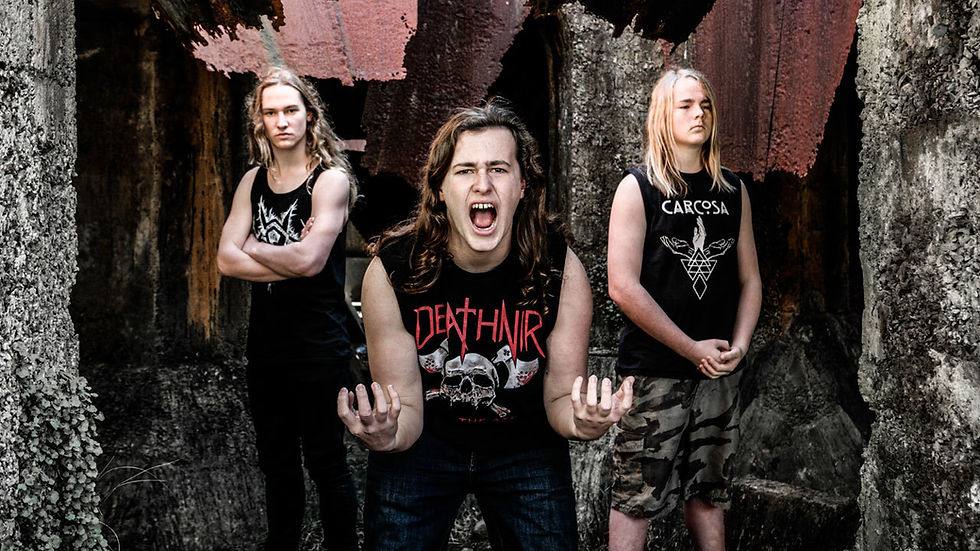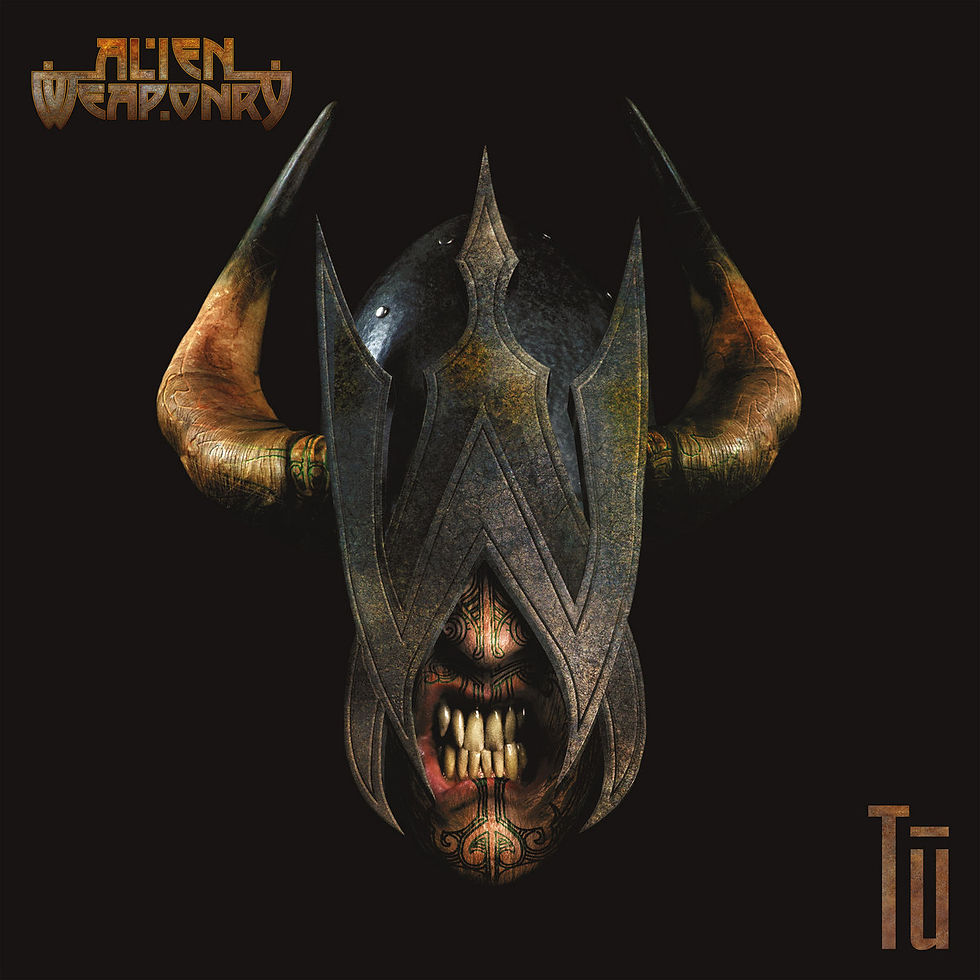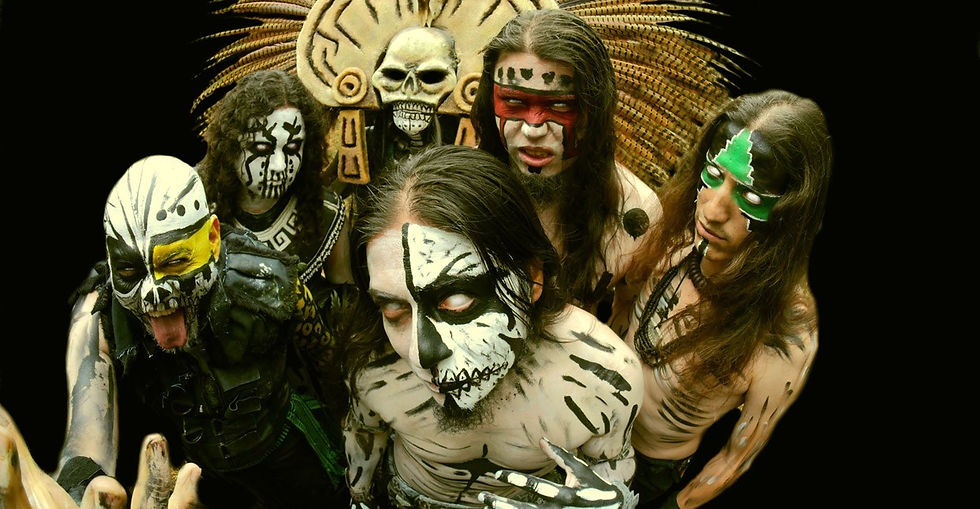By Mark Allard-Will
It's March Metal Madness here at North Sask Music Zine and I, Mark, am following hot on the heels of an article I penned last month, where I delved in to the relationship between mega band Redbone and a French super fan whom scripted a graphic novel about the hugely influential Indigenous disco/rock band.
How am I following that article up here? Good question! By looking at the global rise of Indigenous Metal.
Now, for regular readers, it'll come as no surprise to read that Metal is my stomping ground. It's been the metaphorical fountain I've drank from for the majority of my life, re-musical taste. Metal was how I came of age and what helped me steer my way through struggles with mental health issues in my early twenties; or to put it another way, it's been a constant for me. In that time I've watched sub-genre movements rise and fall and, rarely, stay the course.
Nu Metal, with its unwritten contests of which musicians wore the baggiest pants or dressed the most like deep south trailer trash, is a synonym today for a meteoric rise only to end in a spectacular crash and burn (one that I and millions of Metalheads all over the world cheered as the collective stupor dissipated and a return to genuine Metal fell over the heavy landscape).
However, if we cast our eyes back further than my time in Metal, we see that sub-genre movements haven't all been doomed to fail such as Nu Metal or Djent. We have the two stalwarts of the 1980s, which hold strong to this day and progress with new technical feats and new blood every year; I am, of course, referring to Thrash Metal and Death Metal.
That brings me around to Indigenous Metal, a somewhat unofficial sub-genre that seems to have popped on to the Metal radar some time around 2016. Officially. Unofficially, however, there's been inclusions of Indigenous-influenced sound in Metal, particularly the more politically-motivated and often times more left-leaning Thrash Metal sub-genre, since at least the 1990s and maybe before; but, we'll get to that later.
For now, let's look at how the current rise of Indigenous Metal making waves. The current movement that's gained popularity and global attention began, in earnest, seemingly around 2016; when Alien Weaponry first caught the attention of YouTube viewers around the world and the global Metal press with the worldwide debut of the video for "Raupatu". This moment in the band's young career (the youngest member being only 14 at the time), even garnered them the attention of the UK's Metal Hammer Magazine who named them one of the '10 best Metal bands from New Zealand'; which is a big deal for a band who, at the time, had no one single member to have broken the threshold of being above 21 years of age. And this is all without mentioning that, in the previous calendar year of 2015, they'd managed to secure a very prestigious $10,000NZD grant from NZ On Air to record an album and shoot a video, that video would eventually be the official music video for the aforementioned Raupatu.
This is all incredibly monumental, undeniably impressive, stuff already; but let me add some food for thought for you: They achieved all of this as a Metal band from New Zealand. As one of the most isolated countries on Earth, culturally as well as physically, I bet you couldn't name even one other Metal band from New Zealand; in-fact, you probably couldn't even name a Metal band from NZ before I gave you the Alien Weaponry example. See, not much of NZ reaches us; you have to go out of your way to find it. What makes that more astonishing that they made such a big global splash is that Metal is typically urban, it finds its roots - more often than not - in cities; Alien Weaponry, however, come from the rural setting of Waipu. A tiny, but incredibly picturesque, farming and seasonal tourist town in the back waters of the North Island; a place that from experience (I lived in NZ between 2013 and 2014), I can tell you only gets outside visitors in the peak summer months. The metropolis of Auckland, it is not.
But, none of this is what's important here. What is important is that Alien Weaponry are a band of Māori-Pākehā heritage. The Māori, of course, being the Indigenous peoples of New Zealand and Pākehā, for New Zealand neophytes, is the Māori language word meaning European. In Canadian terms, you could equate the band's members as being what we know as Metis, mixed heritage of Indigenous and European. The band perform a majority of their songs in the Māori language, a language that as few as 50,000 people claim to speak fluently, and, being in the more left-leaning genre of Thrash Metal, topics cover tragic events of the historic, colonial Māori-Pākehā relations and the devastating effects that those events wrought; thereby giving a voice to the Māori in Metal from a direct Māori perspective. In-fact the previously mentioned Raupatu means "confiscated" in the Māori language and is a reference to the passing of a December 1863 parliamentary motion by New Zealand's government that saw the confiscation of ancestral Māori land; land which had previously been guaranteed in treaty to the tribes that held them.

Alien Weaponry
The Māori, as an ancient peoples, have their roots in something that many ancients cultures found their roots in: Paganism. As such, the Māori had a full pantheon of gods that, individually, could conceivably cover any imaginable realm of everyday life for the average person. One of them being the god of war, Tūmatauenga, after which Alien Weaponry would name their debut album, Tū, which saw release on one of the world's largest Metal labels, Napalm Records.

Front cover artwork for Alien Weaponry's Tū
Post-2016, Metalheads who'd suddenly developed a taste for what Alien Weaponry had introduced them to, began to search out more Indigenous Metal. This process of seeking out more of the same, saw an increase in fame and attention given to the likes of Mexico's Cemican; a band that existed since before Alien Weaponry's global rise, but have since been spotlighted by big names in the international Metal press, such as Metal Injection whom called them one of "6 Indigenous Metal bands you need to know about".
Continuing on from where I left of with Alien Weaponry, which is with paganism, Cemican are a band that infuse the rich tapestry of mythology and storytelling tradition of the Aztec peoples in to their music, even performing a small amount of their songs in the Nahuatl language (it is worth noting that most are in Spanish, however). I'd encourage you to read this in-depth dissemination of how Cemican formed and became a band known for using a pre-Spanish colonisation language and Aztec mythology.

Cemican
The hunger for Indigenous Metal that the global Metal press found post-Alien Weaponry continued beyond 2016. Revolver, arguably one of the biggest names in YouTube's Metal press, released a documentary in December of 2018 about Rez Metal. To date, it's garnered half a million views. Rez Metal is the name given to Indigenous Metal in Arizona and other parts of the USA. The documentary focuses on the Navajo and I'd recommend anyone reading this article to give it a watch, which you can do here.
But, 2016 and on hasn't been the first go round for Indigenous culture in Metal. Famously, in 1996 Brazilian Metal giants, Sepultura, experimented with incorporating sampled sounds of instruments and folk song of some of Brazil's Indigenous peoples in their multiple gold-certified album, Roots. Roots, to this day, is still both Sepultura's most lauded album and their highest grossing one. It became what they're remembered for more.
But, Sepultura's Roots is different to the current global Indigenous Metal movement, because Sepultura's band members at the time were of post-Portugese colonial descent and not educated in the Indigenous culture that they referenced. However, they did befriend the tribe they recorded with and full usage rights were negotiated; which is before mentioning that the popularity of Roots can be argued as what inspired Metal's path toward the unofficial Indigenous Metal sub-genre of today.
Roots is a good place to end our journey, because when I reached out to Cemican by e-mail and asked them why Metal? Why incorporate Metal with Indigenous culture? They offered me the following response:
"Inspiration comes from our roots. From the vast culture of our Mexico. There is a lot of information and musical instruments that we can use. The fact of having made this mix comes from our taste for metal in its different subgenres and the cultural and historical greatness of our country, this so that more people around the world know that Mexico is a very culturally rich country."
In summary, do I think Indigenous Metal will weather the sands of time like Thrash and Death Metal? Or will it cave to the fickle natures of passing trends, like Nu Metal? Honestly, I think it's here to stay, I think it's here to stay in the same way that Finnish and German language Metal is here to stay with Korpiklaani and the Neue Deutsche Harte movement respectively; and Metal is, and will be, all the richer for it.


Comentarios